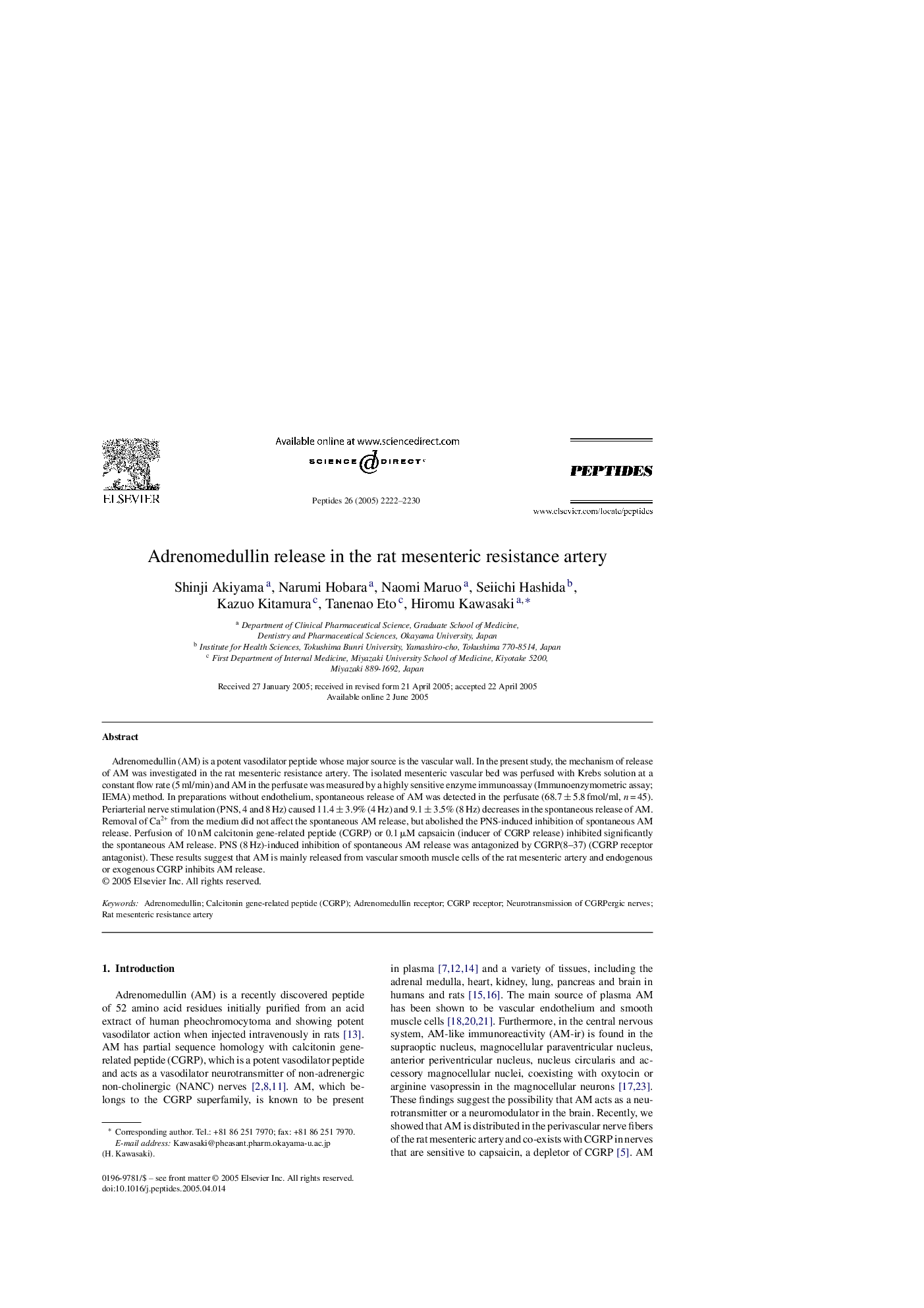| Article ID | Journal | Published Year | Pages | File Type |
|---|---|---|---|---|
| 2008784 | Peptides | 2005 | 9 Pages |
Adrenomedullin (AM) is a potent vasodilator peptide whose major source is the vascular wall. In the present study, the mechanism of release of AM was investigated in the rat mesenteric resistance artery. The isolated mesenteric vascular bed was perfused with Krebs solution at a constant flow rate (5 ml/min) and AM in the perfusate was measured by a highly sensitive enzyme immunoassay (Immunoenzymometric assay; IEMA) method. In preparations without endothelium, spontaneous release of AM was detected in the perfusate (68.7 ± 5.8 fmol/ml, n = 45). Periarterial nerve stimulation (PNS, 4 and 8 Hz) caused 11.4 ± 3.9% (4 Hz) and 9.1 ± 3.5% (8 Hz) decreases in the spontaneous release of AM. Removal of Ca2+ from the medium did not affect the spontaneous AM release, but abolished the PNS-induced inhibition of spontaneous AM release. Perfusion of 10 nM calcitonin gene-related peptide (CGRP) or 0.1 μM capsaicin (inducer of CGRP release) inhibited significantly the spontaneous AM release. PNS (8 Hz)-induced inhibition of spontaneous AM release was antagonized by CGRP(8–37) (CGRP receptor antagonist). These results suggest that AM is mainly released from vascular smooth muscle cells of the rat mesenteric artery and endogenous or exogenous CGRP inhibits AM release.
